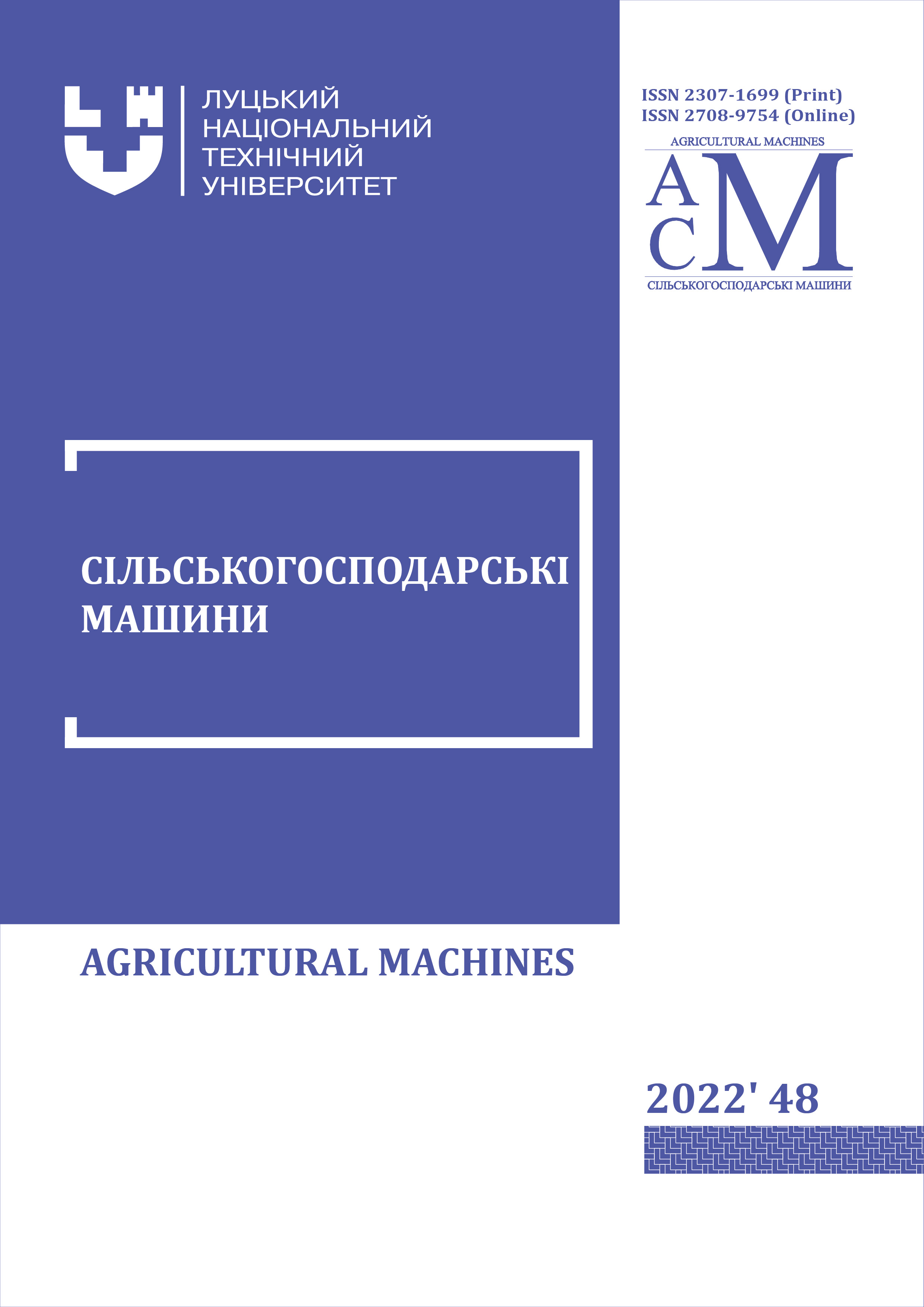THE MODERN TECHNOLOGIES OF BAST CROPS BIOMASS PROCESSING
Abstract
The demand for natural fabrics is growing every year in the world, because natural plant fibers have such consumer properties as heat resistance, abrasion resistance, strength, fire resistance, and they are superior in quality to well-known synthetic fibers. France, Belgium and the Netherlands remain world leaders in the production of flax, from which textile fiber is obtained. In the coming years, China may join the world leaders in this field. Hemp and flax are the most common bast crops for obtaining plant fibers in Ukraine. The products that can be obtained from the harvest of these crops are divided into two groups: non-food and food. Accordingly, the technologies used for the primary processing of linseed, flax and hemp must take this into account. Today, the most relevant for agricultural producers is the cultivation of bast crops with the complex use of all components of the crop. To achieve this, it is necessary to implement universal technologies for the processing of bast biomass, which can be used for both flax and hemp. Therefore, the main requirements for processing lines of bast crops are complexity and versatility. Also, during the cultivation of bast crops, it is important to take into account the natural and climatic conditions of the growing area, as they significantly affect the yield and quality of the seeds and stem. In case of low quality of the harvest, the harvest must be used for the production of non-woven materials, composites, construction materials, solid and liquid fuels, fodder, etc. In this context, the experience of other countries in the cultivation and processing of bast crops is important. The article examines modern lines of processing of bast crops (oil flax, fibre flax, hemp) of foreign production. The analyzed lines most satisfy the requirements of universality and complexity of use. Both large agricultural enterprises, flax and hemp farms, and small specialized farms can be equipped with the modern lines for the processing of bast crops. These lines do not require a lot of staff to maintain. The article also outlines the possibilities of using the obtained products.
References
СПИСОК ПОСИЛАНЬ
Berezovsky, Y., Kuzmina, T., & Mazievich, T. (2020). Influence of the oil flax eco-brand on the development of safe production. Scientific Horizons, 23(12), 65-73.
Boyko, G., Holovenko, T., Yageluk, S., Kuzmina, T., & Evtushenko, V. (2021). Methods for improving the qualitative indicators of fabric on the basis of hemp cotonine for the top of footwear. Vlakna a Textilthis, 28(2), 3-8.
Didukh, V., Yaheliuk, S., Artyukh, T., Albota, D., & Holiy, O. (2022). Decrease of elastic properties of oleanginous flax residues by decortication. INMATEH – Agricultural Engineering, 67(2), 285-292. https://doi.org/10.35633/inmateh-67-29
Dudarev, I., & Say, V. (2020). Development of resource-saving technology of linseed harvesting. Journal of Natural Fibers, 17(9), 1307-1316. https://doi.org/10.1080/15440478.2018.1558161
FAOSTAT. (n.d.). Compare Data. Retrieved July 1, 2022, from https://www.fao.org/faostat/en/#compare
Gregory, М. (2016). Solid biofuels: producer and property: Manual for the use of solid biofuel producers. Government Rep. Moldova, Progr. United Nations Development. Chisinau: S. n.
Leonard, W., Zhang, P., Ying, D., & Fang, Z. (2020). Hempseed in food industry: Nutritional value, health benefits, and industrial applications. Comprehensive Reviews in Food Science and Food Safety, 19(1), 282-308.
Ouagne, P., Barthod-Malat, B., Evon, P., Labonne, L., & Placet, V. (2017). Fibre extraction from oleaginous flax for technical textile applications: influence of pre-processing parameters on fibre extraction yield, size distribution and mechanical properties. Procedia Engineering, 200, 213-220.
UKRSTAT. (n.d.). Посівні площі сільськогосподарських культур за їх видами. Retrieved July 1, 2022, from https://ukrstat.gov.ua/operativ/operativ2019/sg/ppsgk/arh_ppsgk_u.html
Vanhauwaert. (n.d.). Bast fiber processing. Retrieved July 1, 2022, from https://www.vanhauwaertmachines.com/ru/107610861084
Yaheliuk, S., Didukh, V., Busnyuk, V., Boyko, G., & Shubalyi, O. (2020). Opnsmszation on efficient combustion process of small-sized fuel rolls made of oleaginous flax residues. INMATEH – Agricultural Engineering, 62(3), 361-368. https://doi.org/10.35633/inmateh-62-38
Ніколайчук, Л. Г. (2018). Сучасний асортимент товарів із технічних конопель (Modern range of products from technical hemp). Вісник Хмельницького національного університету. Технічні науки, 3, 130-134.
Онюх, Ю. М. (2017). Застосування Північно-Європейської технології вирощування льону олійного (Application of the Northern European technology of growing oilseed flax). Сільськогосподарські машини, 36, 119-124.
Шолойко, Н. В., Попов, В. І., & Лисенко, Т. І. (2019). Сучасний стан та перспективи застосування конопель у медицині та фармації (The current state and prospects of the use of hemp in medicine and pharmacy). Фітотерапія. Часопис, 1, 44-51.
Ягелюк, С. В., & Дідух, В. Ф. (2020а). Напрямки використання продукції переробки льону олійного та льону-довгунця (The use of produce of the flax processing). Товарознавчий вісник, 1(13), 292-305. https://doi.org/10.36910/6775-2310- 5283-2020-13-25
Ягелюк, С. В., & Дідух, В. Ф. (2020b). Концептуальна модель технологій переробки стебел льону (A concept model of technologies for processing flax stems). Сільськогосподарські машини, 44, 155-164. https://doi.org/10.36910/agromash.vi44.300











